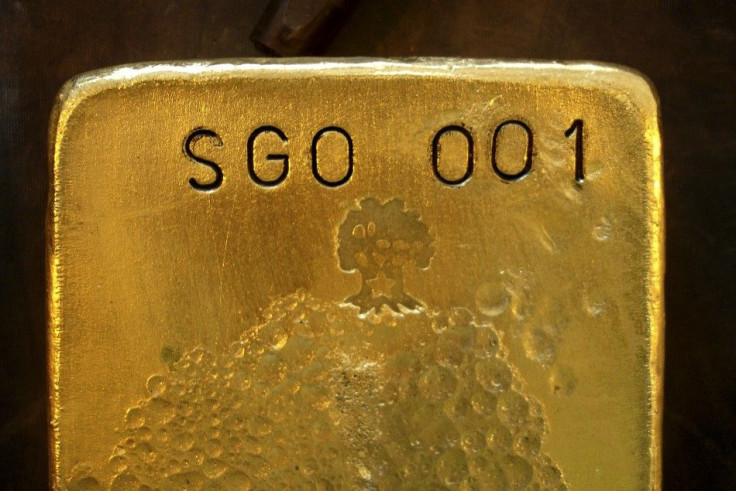Gold Price Plunging Toward Biggest 3-Day Fall in 28 Years

Gold was set for its biggest three-day loss in 28 years Monday, as investors fled commodity markets in a scramble to secure cash in the face of mounting fear over the impact of a potential Greek debt default on the rest of the Eurozone.
European policymakers began working on new ways to stop fallout from Greece's near-bankruptcy from inflicting more damage on the world economy after stinging criticism for failing to stem the debt crisis.
European equities fell, while industrial commodities such as crude oil and base metals bore the brunt of investor desire for cash in the face of mounting uncertainty.
In the last three days alone, gold has fallen by nearly 10 percent in its largest three-day slide since February 1983 and implied volatility has risen to a 2-1/2 year high.
Spot gold was last down 3.0 percent on the day at $1,621.49 an ounce by 0903 GMT, having fallen earlier by as much as 7.4 percent, putting the difference between the intraday high and low at $128.40, the largest daily price swing on record.
It shows you that at times of extreme stress, there is not a suitable substitute to liquidity and although gold is liquid by metal standards, in comparison to treasuries, when you get this kind of flight to cash, then it really is cash that counts and that means U.S. dollars, said Credit Suisse analyst Tom Kendall.
The markets are going to continue to react this week to the political situation within Europe and I don't see any quick resolution or stimulus coming to the markets.
After a weekend of being told by the U.S., China and other countries that they must get more aggressive in their crisis response, European officials focused on ways to beef up their existing 440 billion-euro rescue fund.
Deep differences remained over whether the European Central Bank should commit more of its massive resources to shoring up Europe's banks and help struggling Eurozone member countries.
INVESTORS RUN
The lack of consensus on a lasting solution to the Eurozone debt crisis has been a major driver in this year's rise in the gold price to record highs above $1,900 an ounce.
The rise in volatility taking place in the gold price was clearly an indication that gold was no longer a low-risk asset. So there are a few signs there that would have given you pause for thought, but inevitably when the move happens, everyone is taken a little bit by surprise, said Natixis commodities strategist Nic Brown.
I would suggest that part of what is happening is a collective move away from commodities by investors. The fact that there is carnage going on across the commodities spectrum indicates there are a fair few investors who are getting cold feet at this stage and that has hit some precious metals disproportionately, he said.
Last week's data on investment in U.S. gold futures shows speculators cut their holdings to their lowest level in over two years, as reflected by the fall in net non-commercial open interest on COMEX.
Short-term interest rates on dollars and other major currencies, have shot up this month, as banks have become increasingly unwilling to extend funding to each other because of fears over their individual exposure to the debt of the peripheral Eurozone nations.
Gold is often sold off as a means of raising dollars when funding conditions deteriorate, much as they did in late 2008 with the onset of the credit crunch that ensued from banks withholding lending because of their concern over counterparty exposure to toxic U.S. mortgage-backed assets.
Gold is one of the few assets that remains in positive territory this year, in a sense it is one of the last assets standing, and because of this as investors head for cash they sell the assets that have performed. Essentially gold is a victim of its own success as liquidity trumps, wrote UBS analyst Edel Tully in a note.
Silver came under fire, falling by as much as 16 percent at one point in the day and set for its worst three-day fall on record, having lost more than 25 percent in this period.
The spot price was last down 4.9 percent at $29.54 an ounce, its lowest since last November.
Platinum fell by more than 3 percent to $1,543.75 an ounce, its lowest since May last year, while palladium fell 0.3 percent to $627.97 an ounce, its lowest since last October.
© Copyright Thomson Reuters 2024. All rights reserved.












